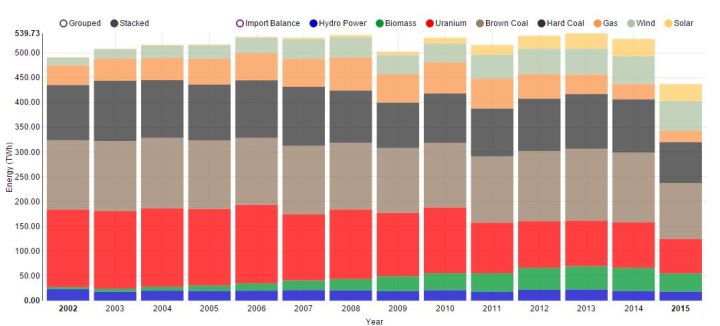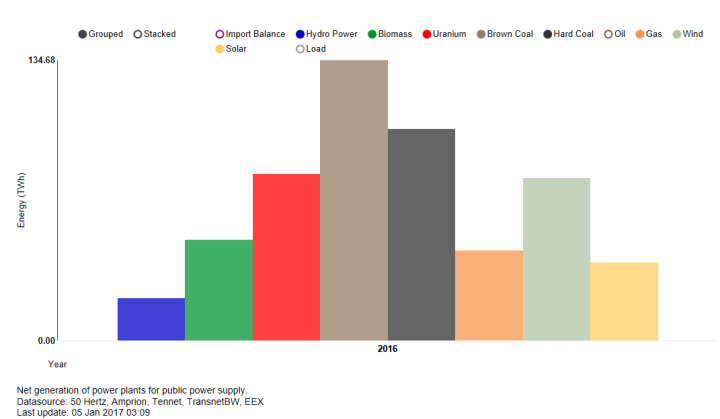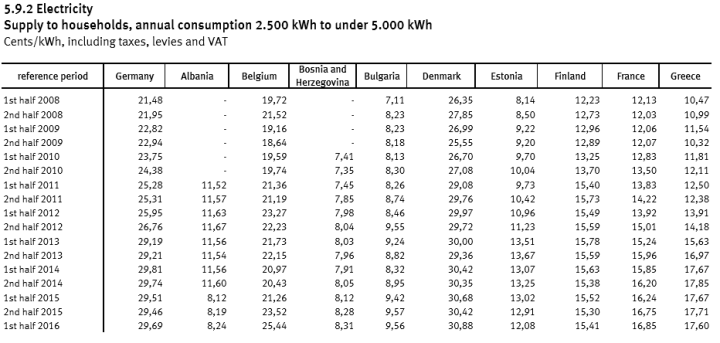Opinions differ regarding the German energy transition. As always with energy, it is important to look at the actual facts and statistics while paying attention to the details.
Here are four key statistics from Germany´s energy transition.
1) Renewable energy has increased while nuclear power has decreased.
2) The amount of lignite (brown coal) and coal used has slightly increased since 2010 from 130 TWh/year to 136 TWh/year.



https://www.energy-charts.de/energy.htm
3) The carbon intensity of the energy sector has increased in Germany while it has decreased in Europe. The carbon intensity of the energy sector in Germany is 44% higher compared to France.

EU ENERGY IN FIGURES – POCKETBOOK 2016 page 119
4) Electricity prices has drastically increased.

Federal Statistics Office https://www.destatis.de/DE/Publikationen/Thematisch/Preise/Energiepreise/EnergyPriceTrendsPDF_5619002.pdf?__blob=publicationFile
It is sometimes debated If Germany really has increased it’s use of coal and it’s CO2 emissions. The validity of these statements depend on which dataset timeframe that is examined. It is not debatable, however that the carbon intensity of the power sector has increased since 2010 and that the rapid increase of renewable energy in Germany has greatly increased the electricity prices. Germany´s CO2 emissions dropped about 10% between 2000 and 2009. This is in stark contrast to the last 6 years during which there has been almost no change in CO2 emissions at all.
In Germany, as in many other electricity markets, electricity is bought and sold either for the next day, or for the next hour. The price depends on supply and demand and there is also an option to import and export electricity. Renewable energies are guaranteed a price, and also the ability to sell all the electricity they produce. This creates a smaller market for fossil fuels. Because of the high marginal cost of gas power plants they cannot compete with coal power in the new smaller electricity market. Several gas power plants in Germany have closed the last years for this reason. This has created a situation where coal power has increased while gas power has decreased. The CO2 emissions from a gas power is about half compared to coal power, and therefore the transition from gas to coal has increased the carbon intensity of Germany’s power production.
This trend could continue as long as coal prices are low compared to gas. Since 2010 coal prices have slightly decreased while German gas prices have increased.
The price of coal and gas can of course change. Germany is currently subsidizing coal with 1.65 billion EUR but this subsidy is planned to be removed by 2018. This, together with a potential CO2 tax or cap, could increase the price of coal making gas more competitive.
In summary; Germany is subsidizing both coal and renewable energy while closing its nuclear power plant. This has caused high electricity prices without a reduction in emissions.
MORE SOURCES
A longer discussion of gas and oil in Germany
http://www.timera-energy.com/gas-vs-coal-switching-in-continental-power-markets/
Some statistics on German energy sources
https://ec.europa.eu/energy/sites/ener/files/documents/2014_pocketbook.pdf
http://cleantechnica.com/2015/02/01/analysis-shows-germanys-energiewende-right-track/
How the German electricity market operates
The relationship between increased renewable energy and electricity price
http://www.economist.com/blogs/economist-explains/2014/12/economist-explains-10